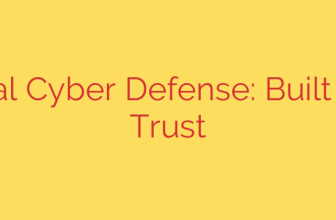
Is Your Help Desk the Weakest Link in Your Security? How to Defend It
In the relentless battle for cybersecurity, organizations invest heavily in firewalls, endpoint protection, and advanced threat detection. But what if the most significant vulnerability isn’t a piece of software, but a department built on trust and a desire to help? Cybercriminals are increasingly turning their attention to a new, high-value target: your IT service desk.
This strategic shift exploits the human element of security. Attackers understand that help desk professionals are trained to be helpful and solve problems quickly—a trait they are now systematically manipulating to bypass even the most sophisticated technical defenses. By impersonating employees, they can trick support staff into performing actions that grant them complete control over user accounts, leading to devastating breaches.
Why the Service Desk is a Prime Target
Your IT help desk is the central nervous system for user access and support, making it an incredibly attractive target for malicious actors. It holds the keys to the kingdom, often with the authority to:
- Reset user passwords.
- Reconfigure or disable Multi-Factor Authentication (MFA).
- Grant access to sensitive applications and data.
- Onboard new “employees” and provision their accounts.
An attacker who successfully compromises the help desk doesn’t need to hack a server; they can simply ask for the front door key. They leverage the inherent trust between employees and the support team to execute their attacks with alarming success.
Common Tactics Used to Exploit Service Desk Staff
Cybercriminals use carefully crafted social engineering techniques to manipulate support personnel. These aren’t generic phishing emails; they are targeted, convincing, and designed to create a sense of urgency and pressure.
Key attack methods include:
- Executive Impersonation: An attacker calls the help desk pretending to be a C-level executive who is locked out of their account right before a crucial meeting. By creating urgency and leveraging authority, they pressure the agent into bypassing standard security protocols.
- MFA Fatigue and Manipulation: A common tactic involves the attacker triggering dozens of MFA push notifications to the victim’s phone. Annoyed, the victim may ignore them or accidentally approve one. The attacker then calls the help desk, claiming their MFA is “broken” and needs to be reset, tricking the agent into giving them control.
- New Hire Onboarding Fraud: Posing as a manager or HR representative, the attacker requests an account be created for a new, non-existent employee. Once the account is provisioned, they have a legitimate foothold inside your network.
- Using Stolen Information: Attackers often use personal information gathered from previous data breaches (like a mother’s maiden name or date of birth) to answer basic security questions, making their impersonation attempt appear far more credible.
Actionable Steps to Fortify Your Service Desk Security
Protecting your help desk isn’t about replacing your team; it’s about empowering them with better processes, training, and tools. The goal is to make it impossible for an agent to be tricked, no matter how convincing an attacker is.
Here are essential steps to secure this critical function:
Implement Robust Identity Verification: Move beyond knowledge-based questions that can be easily found online. For high-risk requests like password resets or MFA changes, require stronger, multi-channel verification. This could include a video call to visually confirm the user’s identity against an employee ID or a callback to a pre-registered phone number on file.
Conduct Continuous, Realistic Security Training: Annual security awareness training is not enough. Run regular, unannounced simulations that mimic real-world social engineering attacks. This helps your team build muscle memory for spotting and stopping fraudulent requests. Crucially, empower your staff to say “no,” even to a supposed executive, if proper verification procedures aren’t followed.
Enforce the Principle of Least Privilege: Review the permissions granted to your service desk team. Ensure they only have the minimum level of access necessary to perform their duties. For instance, a password reset for a highly privileged account should automatically trigger a multi-level approval workflow involving the user’s direct manager.
Adopt a Zero-Trust Mindset: The core principle of Zero Trust is “never trust, always verify.” This mindset must be embedded in your help desk’s culture. Every request, no matter how trivial it seems or who it appears to come from, must be treated as a potential threat until the user’s identity is fully authenticated through established, secure channels.
Log and Audit All Sensitive Actions: Maintain a clear, immutable audit trail of all high-risk activities performed by the service desk, such as MFA changes and account lockouts. This ensures accountability and allows for rapid investigation in the event of a security incident.
The front line of cybersecurity has shifted. While technical defenses remain vital, the human element is now the primary battlefield. By recognizing your service desk as a critical security checkpoint and fortifying it with stronger verification processes and a culture of healthy skepticism, you can shut down this growing attack vector and protect your organization from the inside out.
Source: https://www.bleepingcomputer.com/news/security/your-service-desk-is-the-new-attack-vector-heres-how-to-defend-it/








